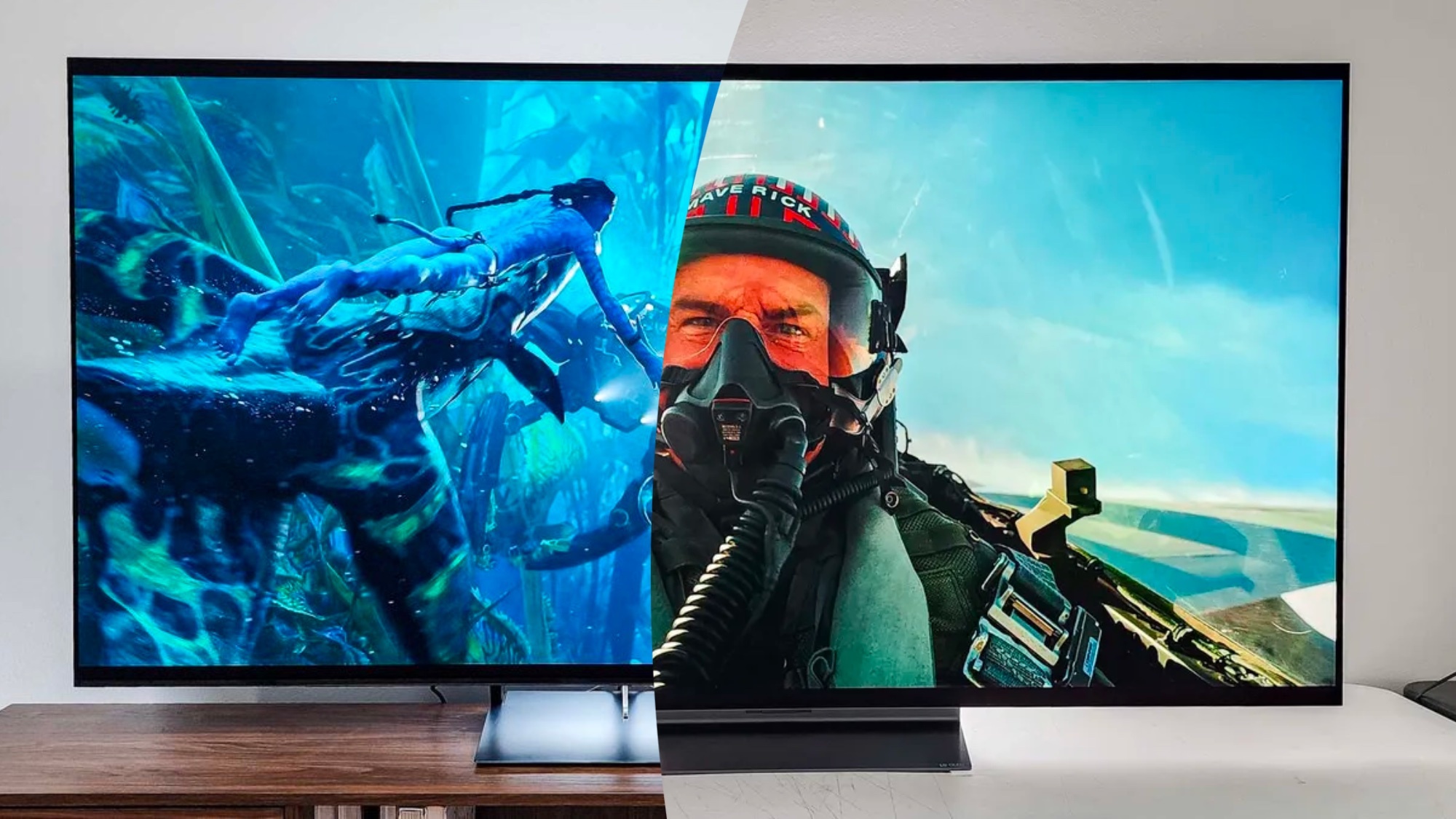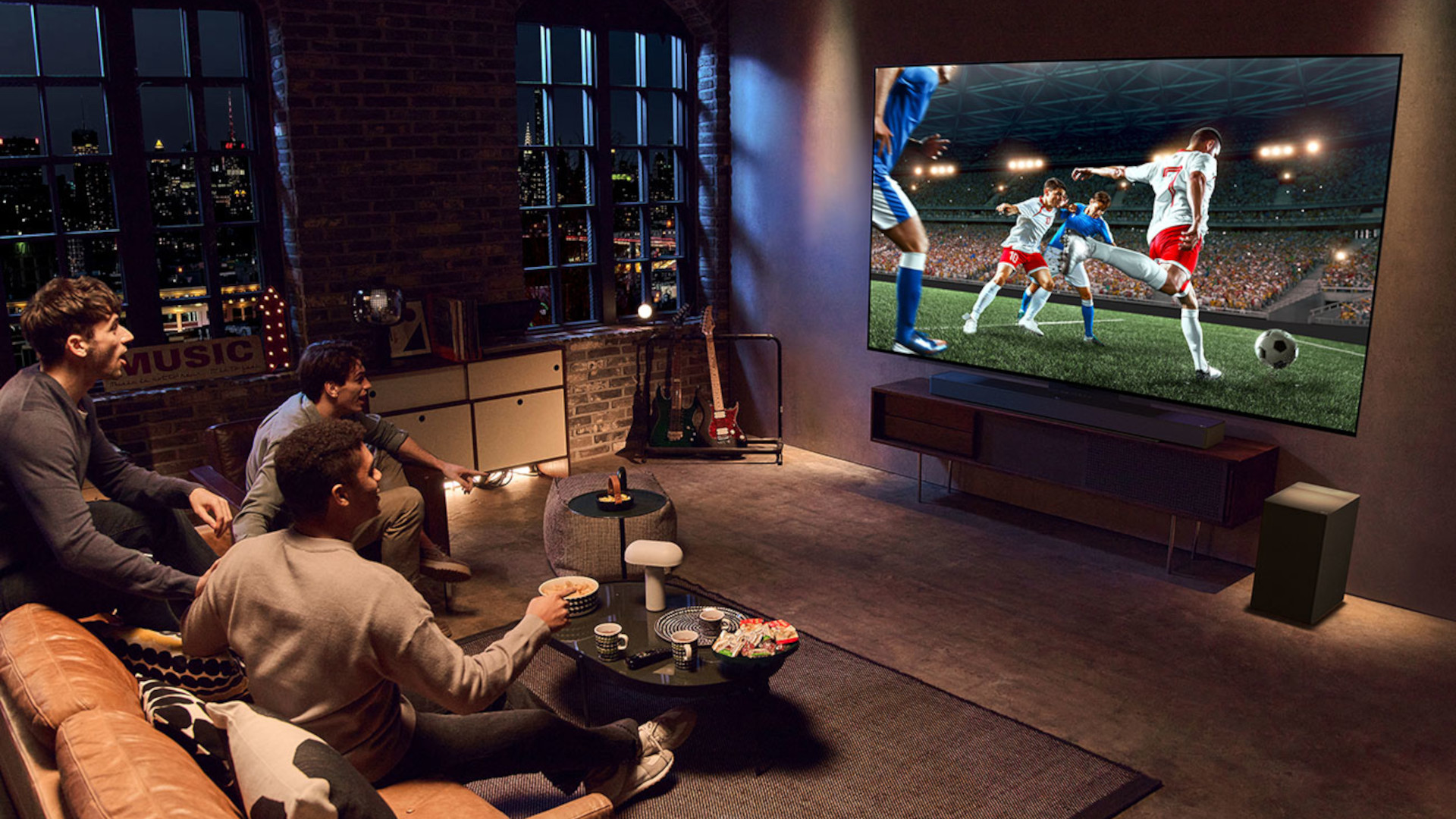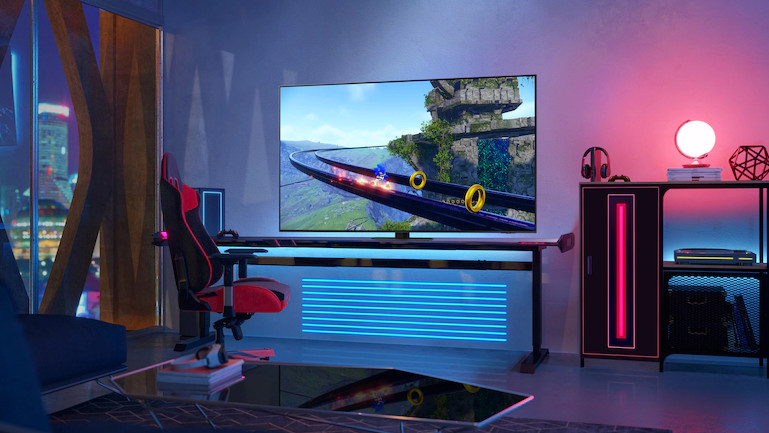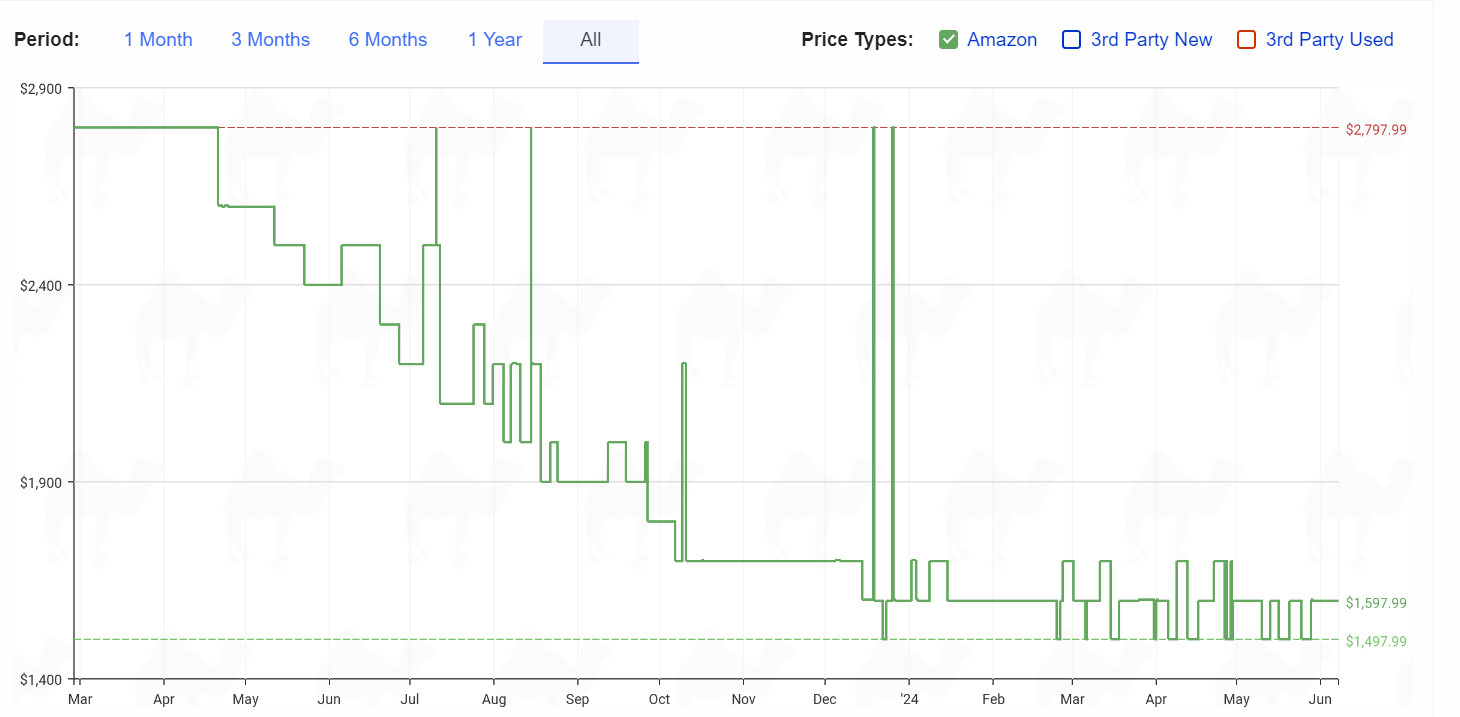
As a TV reviewer with around a decade of experience, my year generally follows the same pattern: I learn about the newest TVs in January at CES; Those TVs become available to buy in March or April. Those same TVs then go on sale for hundreds off or more to make way for next year’s TVs.
All TV makers from Samsung and Sony to LG, Hisense and TCL follow the same pattern.
The problem here — and the dirty secret of the TV industry — is that those TVs you’re buying at launch in April for $2,799 will only cost about $1,500 come Black Friday. Waiting eight or nine months will almost always save you $1,000 (or more!) on a new TV, with some models plummeting in price just a few weeks after launch.
Don’t believe me? Here’s the price data from CamelCamelCamel alongside previous deal coverage from Tom's Guide to prove it.
The LG C3 OLED: A price history

Let’s start with one of the most popular TVs in the world: the LG C3 OLED. It’s not LG’s flagship TV — that spot belongs to the LG G3 OLED — but it's a personal favorite and one that I think offers the best picture quality at the most affordable price.
That is, unless you bought it in March last year for $2,599.
To give credit where credit is due, LG did give the folks that ordered it right at launch a small discount — the regular price of $2,599 briefly started at $2,299 before returning to its MSRP. Still, had you just waited from March to Amazon Prime Day in July, you’d have been able to save $500 as the TV was selling for $2,095 on Amazon.
Waiting four months to buy the 65-inch LG C3 OLED would’ve saved someone $500, and waiting just nine months would’ve saved someone $1,000.
By November, that $2,599 launch price became a mere $1,596, as you can see by this Black Friday LG C3 OLED deals post we wrote up — which is around where the TV currently sits now. Waiting four months to buy the 65-inch LG C3 OLED would’ve saved someone $500, and waiting just nine months would’ve saved someone $1,000.
As someone who spent a lot of time looking at the LG C3 OLED, I’m not sure I would’ve paid almost $2,600 for it. But at $1,596 it’s one of the best TVs you can buy.
The Samsung QN90C: A price history

Of course, LG isn’t the only one committing “fakeflation” — Samsung is just as guilty. Let’s look at its upper-mid-range QN90C Neo QLED TV, for example.
At launch, the 65-inch QN90C was listed for $2,799, but unlike the LG C3 OLED that held firm until Amazon Prime Day in July, the QN90C had its first price cut within a few weeks of launch. What followed was a steady drop until October when the QN90C hit a $1,699 sticker price and, eventually, settled into the $1,599 price we see now.

To play devil’s advocate here, depreciating assets aren’t anything new. It’s relatively common knowledge that cars lose about 10% of their value the moment you drive them off the lot. What’s different here is that, despite that immediate depreciation after the sale, they depreciate a lot less slowly. According to CNBC, it takes about three years for cars to lose around half their value.
The QN90C lost 25% of its value in five months and almost 40% of its value in nine months.
In the world of TVs — and the Samsung QN90C, in particular — it went from $2,799 in March to $2,097 in July in small increments, then to $1,699 in October. According to some basic math, the QN90C lost 25% of its value in five months and almost 40% of its value in nine months.
By three years, you'd be lucky to get a quarter of what you paid for a TV.
Learn from others’ mistakes
What should be clear here is that TVs drop in price, often a lot faster than we’d expect. At launch you’re paying a premium for a TV that will sell for 25% to 40% less within a years’ time. That’s not an opinion — that’s a fact.
To avoid overpaying for a TV, the best thing you can do is wait. Wait for the reviews to come out to see how good a TV is before you buy it. Wait for July or August when we typically get that first wave of TV deals for Amazon Prime Day. Heck, if you can hold out until Black Friday or Cyber Monday, wait until then to buy this year’s new TVs. Your patience is going to be rewarded.
So, to folks who are on the fence about buying this year's new LG C4 OLED and Samsung QN90D, I know there's a temptation to buy the newest screens the second they come out but if you can wait a few months, you’re going to get the same screen for hundreds of dollars less.
Trust me, that TV isn’t going to look any worse in six months’ time. In fact, thanks to software updates, there’s a good chance that it’s going to look better. But that’s a story for another time…







